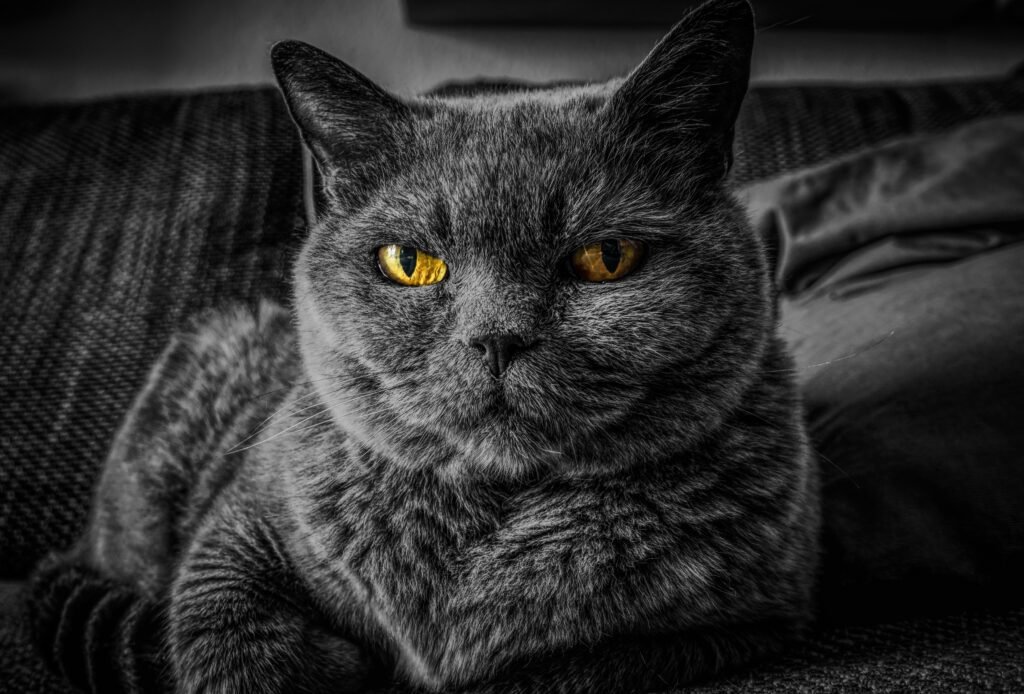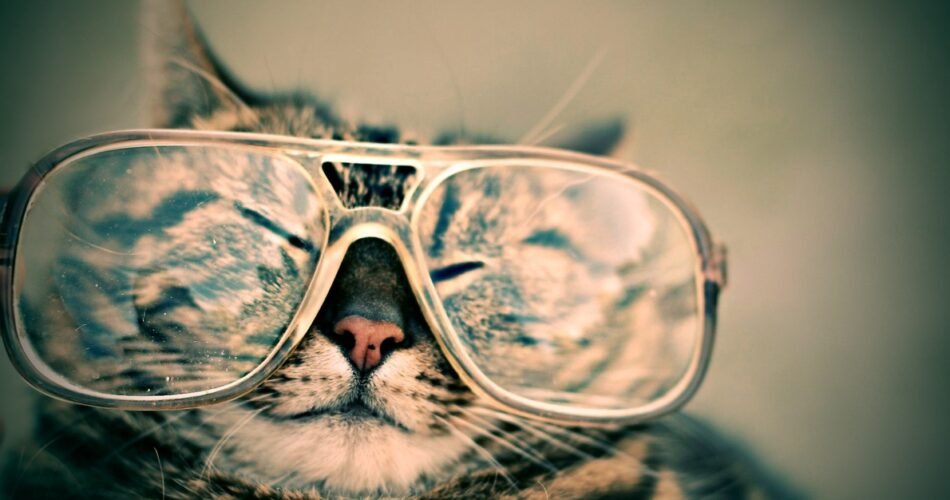Despite their less affectionate personalities, cats remain one of the most popular choices for pets. Even though they aren’t as enthusiastic and cuddly as dogs, cat parents can spend hours reading food reviews, on different websites, to find the most suitable nutrition, researching the best cat toys and scratching posts, adjusting their houses to the needs of their furry friends, and more. However, many cat lovers seem to not understand cats as animal creatures, and the differences between us and them.
People say many things about cats and especially their intriguing eyes. Apparently, they are colour blind, they can see in the dark, their eyesight is much sharper than human’s, and they are completely helpless if they go blind; these are only a few of many supposed facts that people tell each other, very often without consulting reliable sources. Yes, it’s true that cats have an eyesight that it’s very different from ours. But how does it differ exactly?
How are cat eyes different from yours?
Cats are predators. Therefore, they have evolved to hunt in order to survive. That’s why they are most active in the early mornings and in the evenings, when the sun doesn’t shine so brightly. If you have ever wondered why your cat is eager to play and gets louder if you don’t pay attention when you want to sleep, that’s the answer.
The biggest difference between cat eyes and yours is in the retina. Since cats have evolved to hunt in the relative dark, they don’t have to see vibrant colours . Hence, their retina contains eight times as many rods as your eyes. Rods, along with cones, are the light receptors of vision, but rods are more sensitive to light, while cones allow animals to distinct colours and details. That’s how cats are able to see even the smallest creatures in the twilight and dawn hours.
Humans, on the other hand, have ten times as many cones as cats, so we can see bright, various colours and detailed images, but we can’t see very well in the dark.
Can cats see in the dark?

Well, thanks to the big amounts of rods in their retina, cats are much better at seeing in the dark than people. However, they still need a source of light, even the slightest, such as the very early or very late sunlight, the moonlight, or a really little lamp. They are able to see during twilight or dawn hours, in extreme low lights, and near-dark conditions, but not in the complete darkness.
Plus, their pupils, that are normally really narrow, can dilate to nearly the full size of their eyelids. That’s how they let as much light in as possible.
What also takes part in this is something called tapetum lucidum, a reflective layer behind the retina of cats, dogs, and many other mammals. It bounces off the light passing through the retina back towards the receptors; that’s how many animals get green or gold reflection in their eyes, on the contrary to the red reflection in humans.
That’s also why Siamese and other blue-eyed cats don’t see in the dark as well as the rest of felines. They do have a tapetum lucidum, but their cells are abnormal, and reflect light more weakly.
Are cats colour blind?

Since cats have so little cones in their retina, many people claim that they don’t see colour at all. They may not be able to see coloura as vibrant as humans, but they don’t see the world in black and white either, neither are they completely colour blind. Cats are more sensitive to wavelengths of light in bluish and yellowish-greenish ranges. Therefore, they can see these colours quite well (still not as well as humans).
The question are cats colour blind isn’t so clear cut. Colour blindness is actually not about seeing the world in black and white, as many people seem to believe, but to not be able to distinguish some colours from others; the most common condition is not being able to tell green from red, or blue from yellow.
The condition when a creature sees the world only in black and white is called monochromatism, and it’s incredibly rare.
Cats’ cones are the most sensitive to blue and yellow; therefore, they are the closest to people with red-green colour blindness.
What about UV or blacklight?
Ultraviolet or blacklight is invisible to humans, so in a room with only this kind of a lamp, it will be completely dark to us, but not to cats, and some other animals. The lens in human eyes blocks it, but cat eyes (and dogs’ or monkeys’) allow ultraviolet transmission. How does it help? Well, in the wild, they can, for example, track fluorescent urine trails of camouflaged animals.
What do cats see?
The ability to see in a relative dark comes with a price, though. While humans are able to see many details, very often from as far as 100-200 feet away, cats’ clear view range is only around 20 feet. They are sensitive to movements in the dark, but they can’t see many details, as it serves them no purpose.
Also, their eye placement enables them to see a 200° field of view (in humans, it’s a 180°), they have the best depth perception of all carnivores, and they don’t have to blink to lubricate their eyes. What’s interesting is that when a cat blinks, it actually expresses affection; they allow themselves to close their eyes in your presence, which means they trust you.
However, thanks to that, their other senses are much sharper. For example, they are able to hear higher-pitched sounds than humans and even most dogs, as well as to locate the exact location of its source. They also have way more sensory cells inside their olfactory epithelium (200 million compared to 5 million in humans), which makes their sence of smell excellent.
Plus, they rely on their whiskers, which detect vibrations.
Source: cpccares.com



